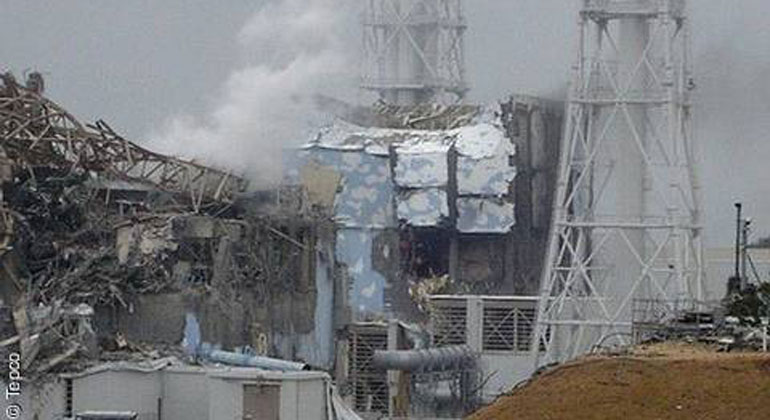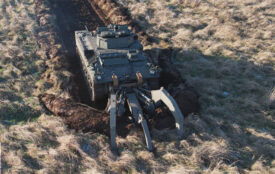IAEA Delivers Major Report on Fukushima Accident to Member States
The International Atomic Energy Agency (IAEA) provided its Member States with a report by Director General Yukiya Amano on the accident at the Fukushima Daiichi Nuclear Power Plant, as part of continuous efforts to strengthen nuclear safety worldwide.
The 240-page report assesses the causes and consequences of the accident triggered by a huge tsunami that followed a massive earthquake on 11 March 2011. It was the worst emergency at a nuclear plant since the Chernobyl disaster a quarter of a century earlier.
Based on data and information from many sources, the report is the result of a collaboration of more than two years involving some 180 experts from 42 Member States and several international bodies.
“The report considers human, organizational and technical factors and aims to provide an understanding of what happened, and why, so that the necessary lessons learned can be acted upon by governments, regulators and nuclear power plant operators throughout the world,” Mr Amano said in a foreword.
“There can be no grounds for complacency about nuclear safety in any country.”
The report also examines measures that were taken in response to the emergency, in Japan and internationally, to prevent future accidents and, should they occur, mitigate the effects. Some of the factors that contributed to the Fukushima Daiichi accident were not unique to Japan.
Mr Amano announced in 2012 that that the IAEA would prepare the report as “an authoritative, factual and balanced assessment, addressing the causes and consequences of the accident, as well as lessons learned”. Work on the report started in early 2013.
The IAEA’s Board of Governors will consider the report at their next regular meeting in June, before its planned subsequent release at the 59th session of the Agency’s General Conference in September, the annual gathering of IAEA Member States.
It draws on five detailed technical volumes being prepared by international experts and on the contributions of the many experts and international bodies involved.
In the foreword, Mr Amano said the immense human impact should not be forgotten. More than 100,000 people were evacuated because of the release of radionuclides to the environment, and many are still unable to return home.
“I visited the Fukushima Daiichi plant a few months after the accident and saw for myself the powerful and destructive impact of the tsunami. It was a shocking and sobering experience,” he said.
Mr Amano said a major factor that contributed to the emergency was a widespread assumption in Japan that its nuclear power plants were so safe that an accident of such a magnitude was simply unthinkable.
“This assumption was accepted by nuclear plant operators and was not challenged by regulators or by the government,” he said. “As a result, Japan was not sufficiently prepared for a severe nuclear accident in March 2011.”
It also exposed certain weaknesses in Japan’s regulatory framework. “Responsibilities were divided among a number of bodies and it was not always clear where authority lay,” Mr Amano said.
“There were also certain weaknesses in plant design, in emergency preparedness and response arrangements and in planning for the management of a severe accident,” he said, adding that insufficient provision had been made for the possibility of a nuclear accident happening at the same time as a large natural disaster.
Mr Amano also highlighted significant steps to improve nuclear safety that were taken after the disaster.
Japan has reformed its regulatory system, giving regulators clearer responsibilities and greater authority. Emergency preparedness and response arrangements have been strengthened.
Other countries have carried out “stress tests” to reassess the design of nuclear power plants against site specific extreme natural hazards, installed additional backup sources of electrical power and supplies of water, and bolstered the protection of plants against extreme external events.
Half a year after the accident, Member States unanimously endorsed an IAEA Action Plan on Nuclear Safety, with a comprehensive work programme to reinforce safety internationally. It covers peer reviews, emergency preparedness and response, regulatory frameworks, remediation and decommissioning, capacity building, as well as the protection of people and the environment.
“I am confident that the legacy of the Fukushima Daiichi accident will be a sharper focus on nuclear safety everywhere,” Mr Amano said. “I have seen improvements in safety measures and procedures in every nuclear power plant that I have visited.”
The IAEA, which provided technical support and expertise to Japan after the accident and shared information about the crisis with the world, has improved its own arrangements for nuclear emergency response, Mr Amano said.
The Agency’s role has been expanded to include providing analysis of a nuclear emergency’s potential consequences and presenting possible scenarios on how it could develop. It has also strengthened its peer review programme, under which international expert teams advise countries on how to improve nuclear safety.
Although nuclear safety remains the responsibility of individual countries, the accident underlined the importance of effective international cooperation. “The IAEA is where most of that cooperation takes place,” Mr Amano said.
Greenpeace: The IAEA Fukushima Daiichi Accident Summary Report: A preliminary analysis








